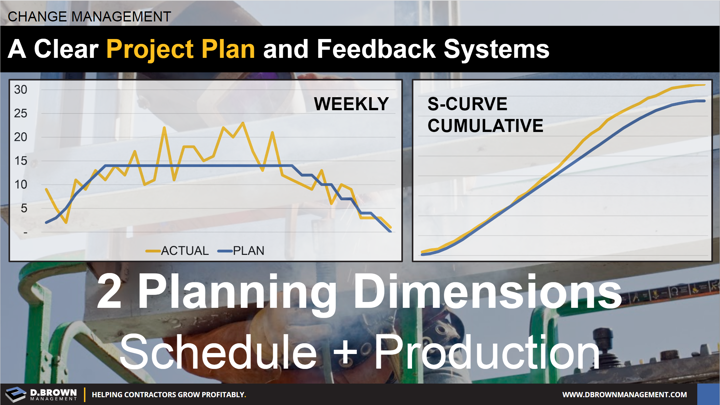Some impacts, such as poor project sequencing or congested work areas are hard to notice if you don’t have good tracking systems.
- A change is ANY DEVIATION from your PLANNED EXECUTION of the project
- You won’t get compensated for all of them, but you want to identify all of them as early as possible, so you can effectively manage them through the process.
- Planning starts by breaking down a project into manageable tasks and then tracking progress and adjusting weekly.
- There are two major outcomes to be planned and measured - schedule and cost with quality and safety as “must-do” items that can never be sacrificed.
- You need feedback on both of these weekly and cumulatively throughout the project to know if you are on-track or off-track. Combined with a rigorous forecasting system, you can identify impacts early. This is a trainable skill.
- You now need to use good Root Cause Analysis skills to develop a “Good Argument” for getting compensated if applicable.

